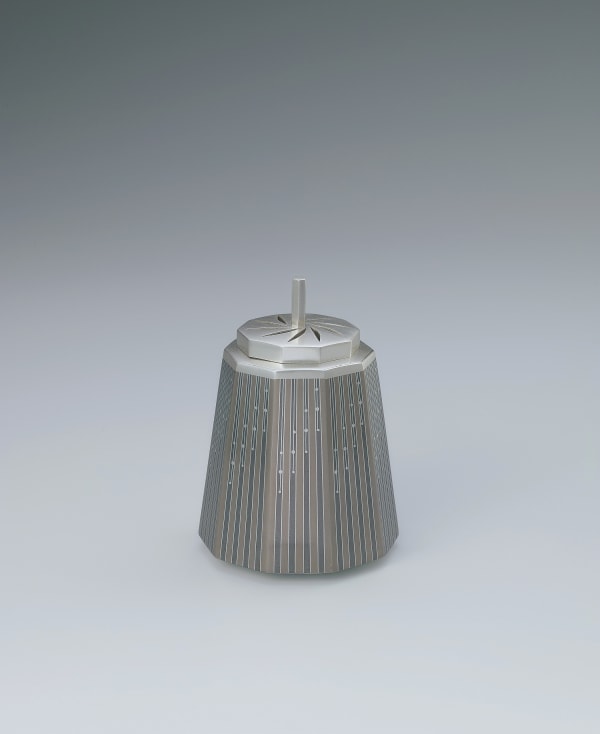-
-
Heated Colors, Hammered Forms: Female Metal Artists of Japan, turns the spotlight onto the contribution made by women to an aspect of kogei that was formerly a male preserve, closely associated with the world of the samurai. Although metals are especially hard to handle, shape, and decorate, the five featured artists have each devoted a lifetime to the medium, using it produce masterpieces that are every bit as expressive and beautiful as work in less obstinate materials such as clay or textile.
-
OSUMI YUKIE'S WORKING PROCESSES
Osumi begins her creation on the surface by chiseling small lines. Then cross-hatching by chiseling over lines in a different direction. This is done several times across the surface to create a grid-like pattern. Then gold, silver, or lead foil is hammered and pressed into the cross-hatched areas on the surface. The foil clings to the grid-like surface, forming to the lines and pockets created by the chisel. See Osumi performing this technique in the video from National Museum of Asian Art in Washington, D.C.
-

-
Okamoto Yoshiko, Hagiawase Flower Vase “Kunpu" (Early Summer Breeze), 2014
-
Her working motif has remained the same throughout her artist’s career that is an endless story of nature woven by the four seasons in which she incorporates poetic and musical aspects. This is done by using gradation of many layers of colorful tones of metal.
-
-

-
-

-
 Oshiyama Motoko, Kakuhanmon Vase “Yunagi” (Evening Calm), 2021
Oshiyama Motoko, Kakuhanmon Vase “Yunagi” (Evening Calm), 2021 -
 Oshiyama Motoko, Kakuhanmon Vase “Shunen” (Spring Festival), 2022
Oshiyama Motoko, Kakuhanmon Vase “Shunen” (Spring Festival), 2022 -
-
We welcome seasoned collectors and newcomers to kogei to appreciate the passion, care, and creativity that each of the five artists has devoted to this magical process, “substituting the permanent for the fleeting.”
-

-
 Hagino Noriko Uchidashi Silver Water Jar 01, 2017
Hagino Noriko Uchidashi Silver Water Jar 01, 2017 -

-
 Otsuki Masako , Silver Vase “Yu” (Play), 1997
Otsuki Masako , Silver Vase “Yu” (Play), 1997
Join our mailing list
* denotes required fields
We will process the personal data you have supplied in accordance with our privacy policy (available on request). You can unsubscribe or change your preferences at any time by clicking the link in our emails.



















